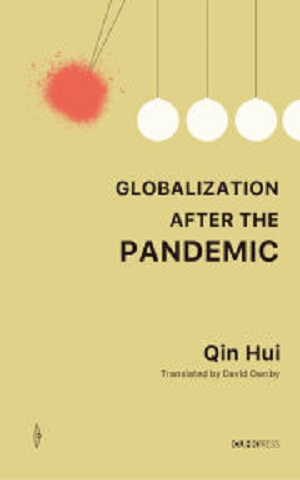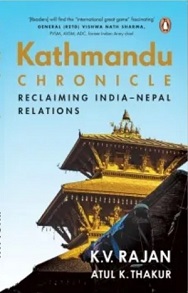During the pandemic, China has pursued a “zero COVID policy,” which has required harsh restrictions on citizens' mobility and freedoms. Well into 2022, the Chinese government is shutting down entire districts, because a few asymptomatic COVID cases were detected.[1] The government has also been willing to bear economic consequences of such strict policies as well. In comparison to countries like the US and the UK, the death toll and case load were reportedly less in China. However, there has been widespread speculation that the Chinese establishment is under-reporting numbers and manipulating data.
In this book, Qin Hui begins with the question of why China was more successful, at least in the initial stages, in responding to COVID-19 compared to democracies like the US, the UK, Japan and South Korea. He argues that the difference in success is substantial, even after accounting for the possibility that the Chinese regime manipulated data and under-reported cases. This may be the principal drawback of the book for those readers who are more than skeptical of the Chinese regime’s reliability. In my reading of the book, the validity of China’s claims is not crucial to appreciate the book’s analysis of historical developments, concepts, and questions. Moreover, Qin’s focus is more on the stark differences in the style of crisis governance between China and liberal democracies.
However, Qin is not advocating for Chinese-style authoritarianism over democracy. In fact, the opposite is the case. Qin’s primary aim is to compare crisis governance styles and mechanisms to discuss the impact of the COVID-19 pandemic on political institutions in China and the West. Qin argues that China leveraged the lack of human rights in the country to impose harsher and more coercive restrictions, with no thought given to rights or the economy for that matter. Qin bluntly calls this a “low human rights advantage.” In democracies, especially Western democracies, governments’ power is (often rightfully) limited by concerns over human rights. Coercive measures were imposed reluctantly and improperly, often too late, and not for long enough. What deficiencies did COVID-19 expose in both governance styles and institutions? While Qin is critical of both China and the West, the book’s translator David Ownby writes that “Qin very much wants democracy to survive and prosper, in the West and eventually in China as well.” Therefore, the book is preoccupied with how democratic institutions may become more robust in handling crisis governance.
Qin’s brings up three important questions:
1) To what extent does a concern with human rights impede crisis governance?
2) When should a democratic state constrain human rights (in public interest)? and,
3) How can this be done efficiently, ensuring that rights are restored once the crisis is over and the state of emergency is not normalized?
The book has three chapters, each dealing with a different thematic component of the argument. The first chapter is concerned with the effect epidemics and pandemics have on political institutions. Qin’s principal example here is the Black Death and how it contributed to the decline of serfdom, eventually leading to industrialization in Western Europe. The fate of political institutions radically changes the direction that societies are heading in. In this chapter, Qin compares and critiques the differing crisis governance styles of authoritarianism and democracy during COVID-19. Qin also details how masks, quarantines and social isolation evolved in the West from medieval times. In part, he hopes to dispel China’s triumphalist claim that they are somehow innovative in their ability to deploy quarantine measures against COVID-19.
The second chapter details how during the West’s history, medical progress and advancement of human rights meant that quarantine and isolation were viewed as non-essential and unnecessarily repressive/prone to abuse. However, in the early 21st century, the limits of medical progress were encountered with SARS, and quarantine/isolation were reintroduced while trying to reconcile human rights and these restrictive measures. The Siracusa Principles, adopted by the UN, state when human rights can be legitimately restricted. They also provide ethical requirements of implementing such restrictions. Qin concludes the chapter with an argument that limits to human rights are legitimate in certain circumstances, and that rights are also a privilege - they are not inherently “good.”
In Chapter 3, Qin discusses the notion of crisis governance and “public disaster ethics” - when rights are curtailed in the name of public interest, but public interest is not decided democratically. Qin presents a historical review of “dictatorship” which originally arose in Ancient Rome as a temporary, time-bound, suspension of democracy during wartime. Military commanders were given temporary powers not constrained by peacetime laws to guide the state efficiently in wartime. It is only during the 20th century, the term “dictator” was associated with tyrannical despots. The temporary suspension of democracy is associated with modern provisions of “states of emergency” deployed during wars or armed conflicts. Qin effectively argues that war and non-traditional threats cannot be fought in the same way. In conclusion, Qin lists a number of lessons China, and the West can both learn from their respective COVID-19 responses. Thus, China must work to get rid of “autocracy,” and practice genuine respect for human rights - especially by allowing greater free speech (China’s initial suppression of information about COVID delayed effective and preemptive responses.) Democracies must learn how to efficiently enter a state of emergency and how to put an end to the emergency measures at the proper time. Both will require far-reaching institutional changes, which can only be executed in the long-term.
The book is relevant, especially for Indian scholars and practitioners, for the following reasons:
1. Qin’s questions are highly relevant in a world where crises are multiplying, and often require quick responses. This is especially the case with non-traditional security threats like biowarfare or cyberwarfare being wielded by state and non-state actors. How can democracies effectively tackle time-sensitive crises without hesitating on issues of human rights and electoral politics? How can they do so without slipping into autocracy and authoritarianism? One might say “declare a temporary state of emergency” - but given India’s past with the 1975 Emergency and the abuses of that provision, governments will always be hesitant. Moreover, the current Emergency provisions in India are designed for traditional security threats of “external aggression/war” or “armed rebellion.”[2] How can emergency provisions be revised and expanded to include non-traditional threats? Such revisions must also make sure that declaring emergency is less prone to abuse/overuse. Even during the pandemic, there has been much debate about “democratic backsliding.” This is a matter of paramount importance for long-term security and must enter into India’s strategic discourse/debate. This is the policy relevance of the book, however daunting and abstract the topic might be to broach.
2. Qin takes a longue duree perspective, which is able to appreciate how institutions change and evolve over time. They are not ahistorical entities, but historically constructed. The writing does not adopt a short-term attitude, which often boils down to a restatement of “current events.” So it has an interesting contribution in its methodology for scholars of security studies and IR. Moreover, it is not concerned with “prediction” and “forecasting.” It is more concerned with using an historical lens to reflect on how democracy can remain secure and thrive in the future. Historical events and processes from before the 20th century are presented in a manner that is relevant to current governance systems.
3. The book is primarily concerned with institutions, which form the basis of how actors act on the international stage. In doing so, there is a fresh perspective offered in terms of how China’s challenge to Western liberal democratic hegemony is cast in realist terms. Qin’s perspective can be called constructivist, as opposed to a structural realist lens that is preoccupied with “the global order” and “the rise and fall of great powers.” Qin’s book is exemplary in demonstrating that even as they evolve, institutions underlie and endure the changing fate of great powers.
4. The book is written by a Chinese scholar and public intellectual, living in China, who is not exactly toeing the regime’s line. It is worthwhile to read the work of a dissident within President Xi’s China, who writes in the hope that in the long-term democratic institutions do take root there, and also that they survive and become robust internationally. Elsewhere, he has diagnosed Western capitalism’s embrace of China based on its “low human rights advantage.” In economic terms, this means “the Chinese state’s willingness to pursue economic development at any price, including land confiscation, the suppression of workers’ rights, and the exploitation of migrant labor.” Qin Hui is an important voice that scholars of China in India should be aware of.
Endnotes :
[1]Gan, Nectar. China's Wuhan shuts down district of 1 million people over 4 asymptomatic Covid cases. CNN (July 27, 2022) https://edition.cnn.com/2022/07/27/china/china-covid-wuhan-shutdown-district-intl-hnk/index.html
[2]The Disaster Management Act (DMA) was invoked in India during COVID-19 to facilitate the government’s response, which grants the executive branch of government significant powers. Biological and Public Health Emergencies were included in the updated National Disaster Management Plan (2019). However, DMA (2005) does not address whether rights can be curtailed owing to a crisis or security threat. This is the crux of the Qin’s argument. Moreover, according to Randahwa & Gupta (2021) and Nomani & Parveen (2020) a specific legal framework is still needed for responding to pandemics and bioterrorism/biowarfare. Public health emergencies have a different life cycle compared to other disasters and require different avenues of administration and infrastructure.
References :
1. Nomani, M. Z. M., and Rehana Parveen. "Covid-19 pandemic and application of disaster management act, 2005: Promises and pitfalls." International Journal of Pharmaceutical Research 12, no. 4 (2020): 3730-3734.
2. Randhawa, Sonali, and Pallavi Gupta. "Legislative Response to Epidemics and Pandemics in India: Need for a Contemporary Comprehensive Law." (2021).
3. Qin, Hui, 2021. Globalization after the Pandemic: Thoughts on the Coronavirus. Translated by David Ownby. Hong Kong: The Chinese University of Hong Kong Press. muse.jhu.edu/book/85649.
4. Gan, Nectar. China's Wuhan shuts down district of 1 million people over 4 asymptomatic Covid cases. CNN (July 27, 2022) https://edition.cnn.com/2022/07/27/china/china-covid-wuhan-shutdown-district-intl-hnk/index.html










Post new comment